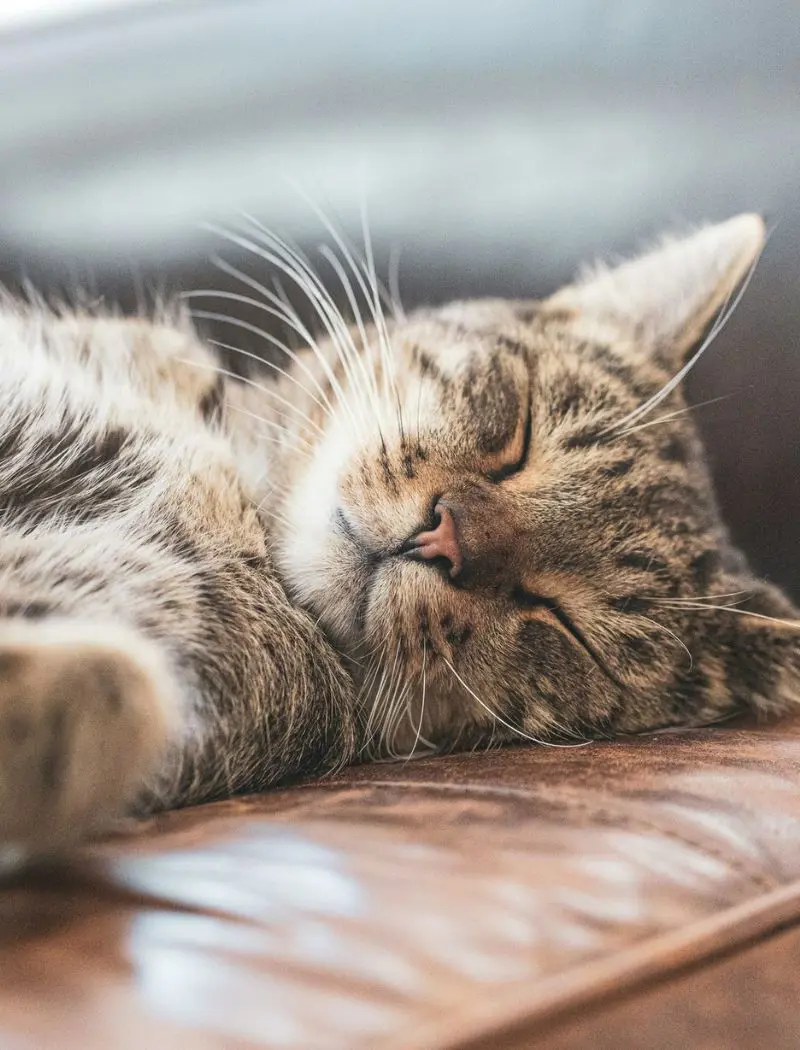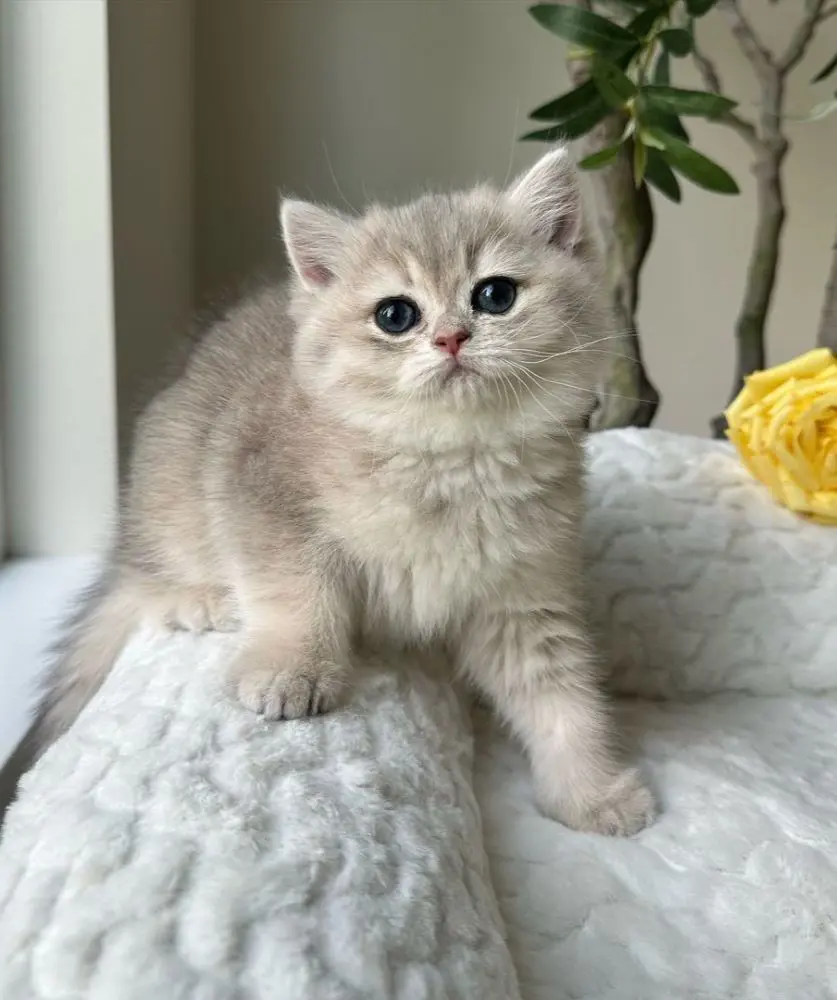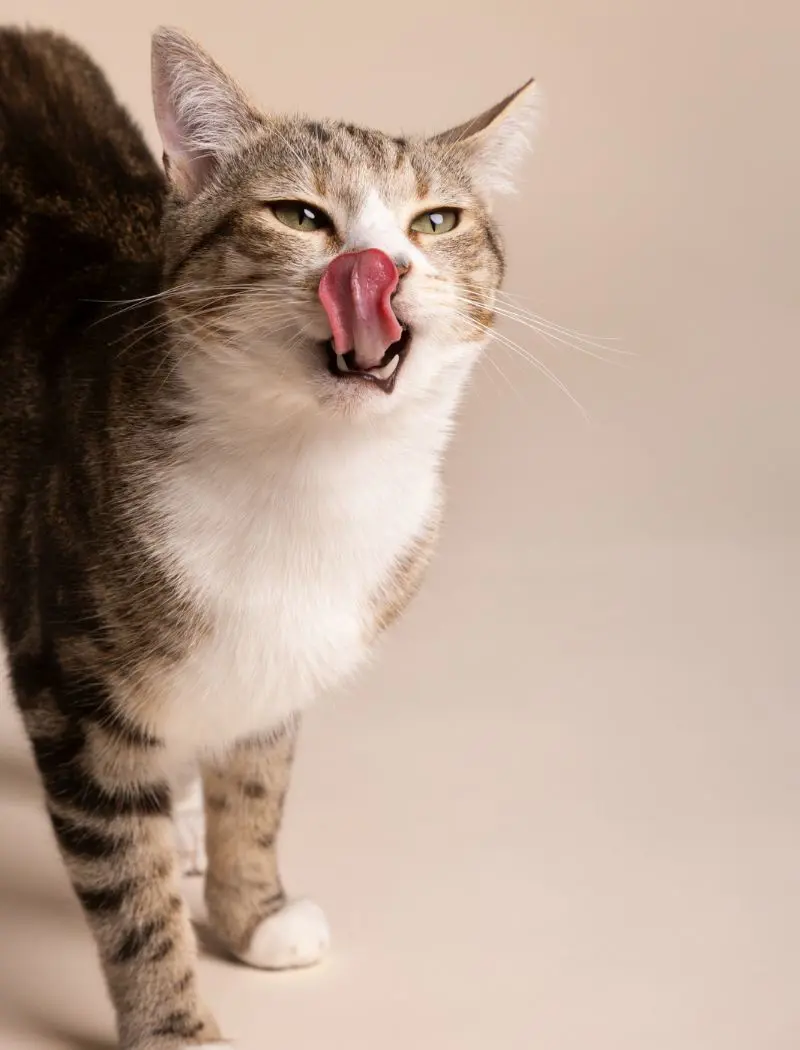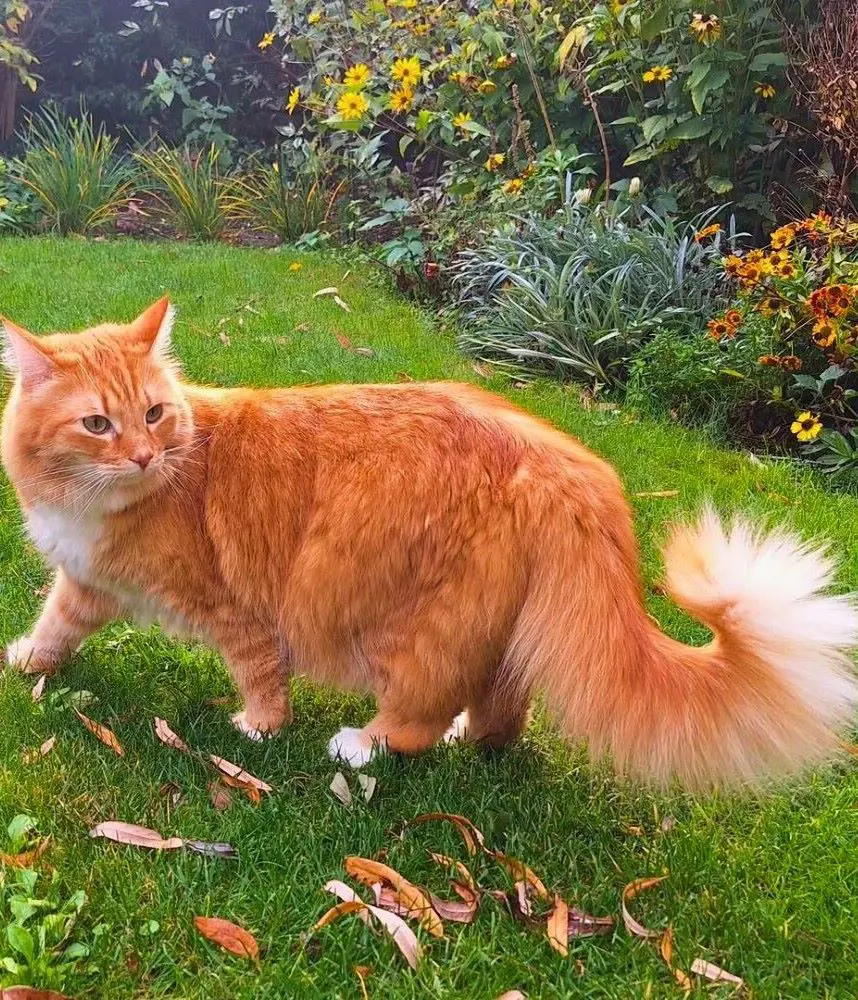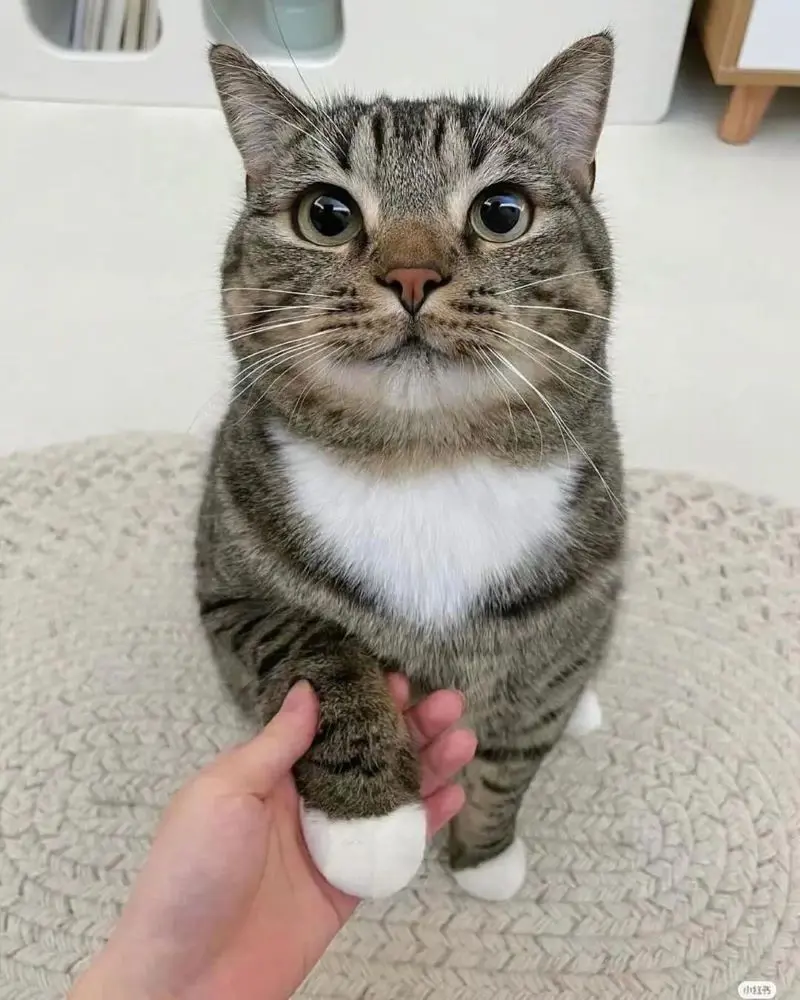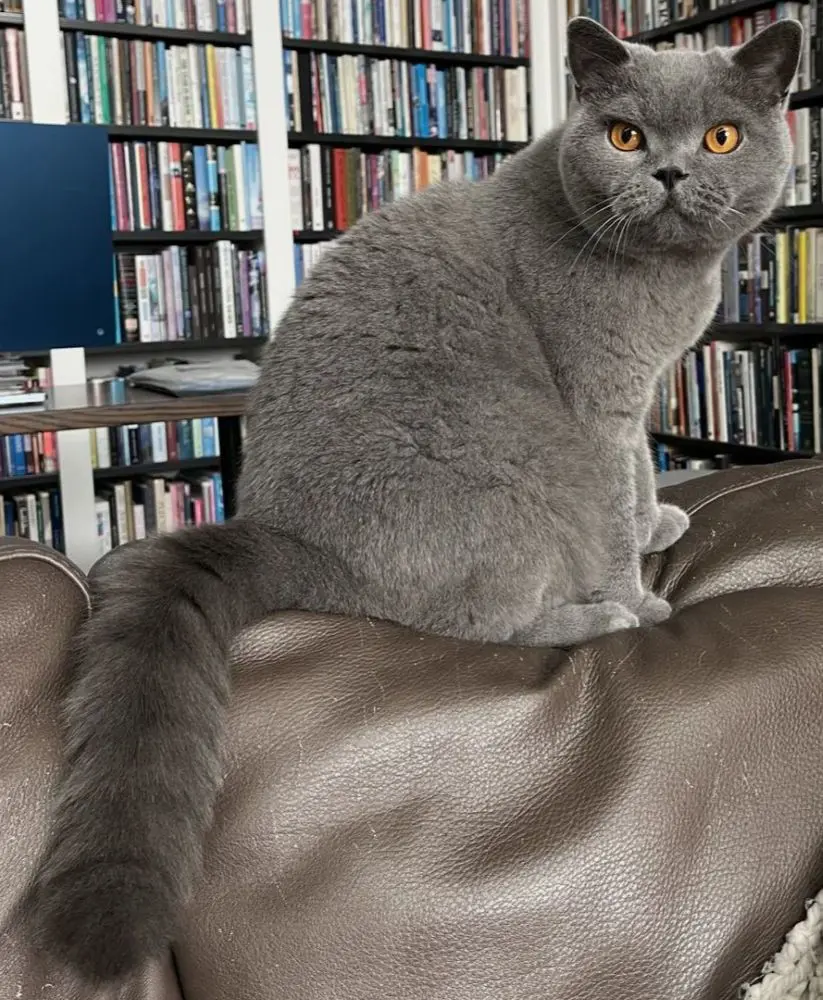Why Is My Cat Shedding Hair? What Is Means And What To Do
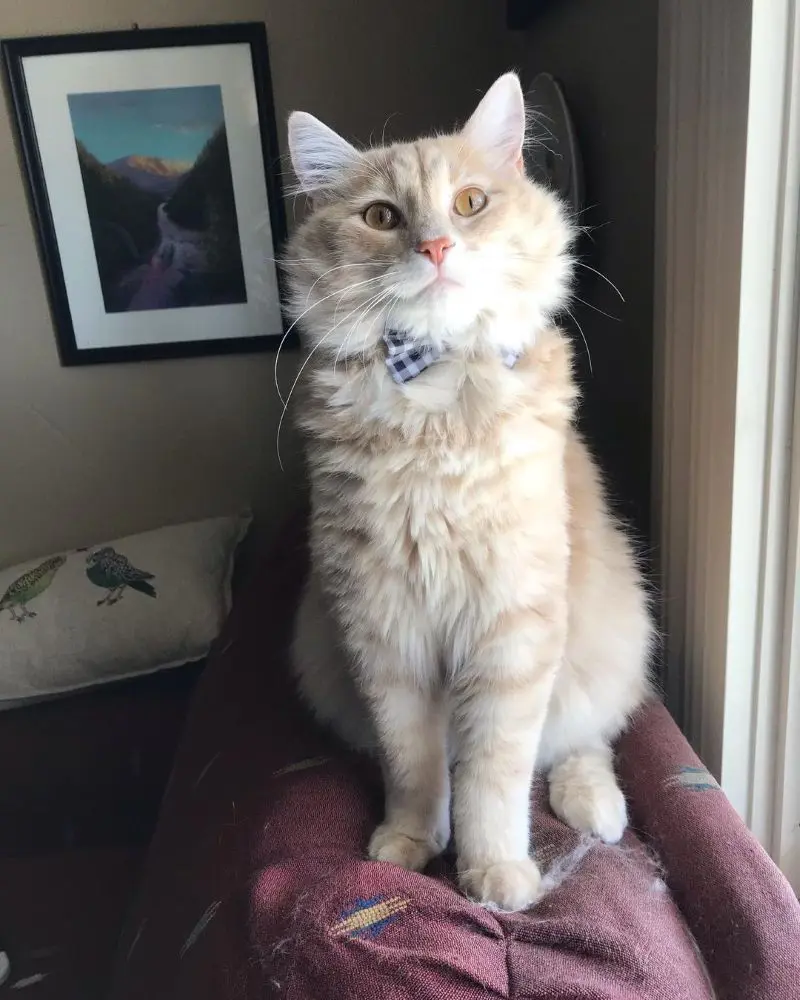
As a cat parent, you must have noticed occasional cat fur on the spots where your pet frequents. Unlike hair fall in humans which is usually caused by an underlying issue, shedding fur in cats is normal.
Occasional and seasonal shedding shouldn't warrant much concern; however, excessive shedding can be a problem and shouldn't be taken lightly by cat owners. In this article, we explore the general rule surrounding the shedding of hair in cats along with causes of excessive shedding and its solutions.
Reasons For Cat Shedding Hair
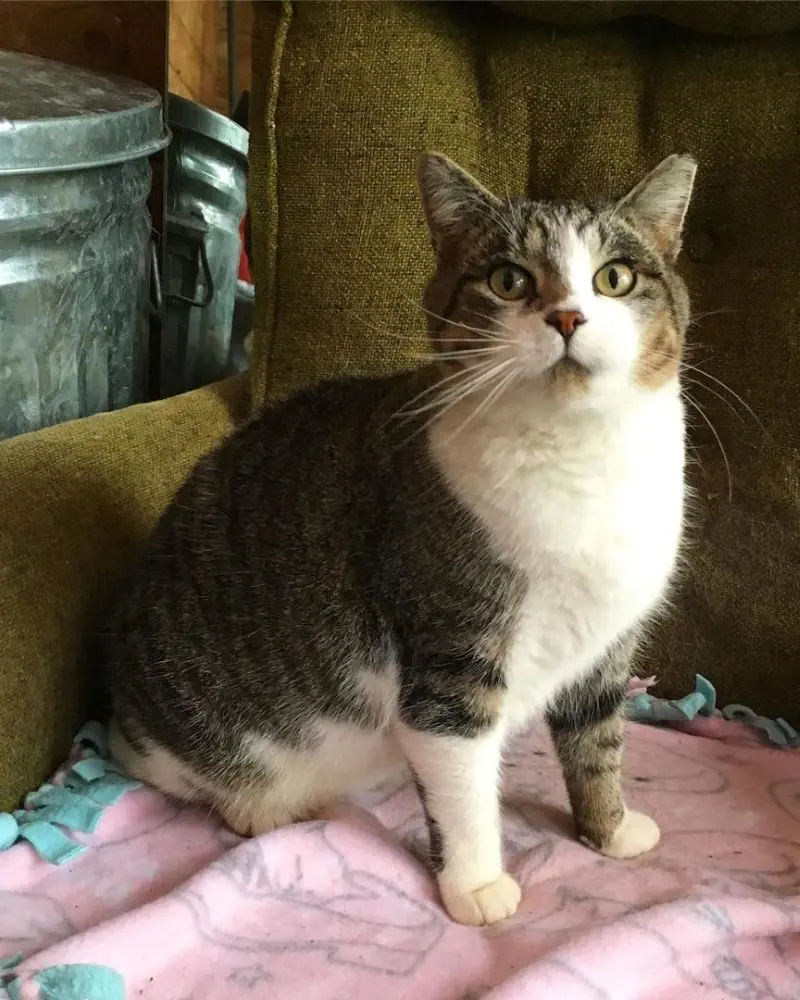
Shedding hair is a natural process in cats, often allowing them to remove dead or old hair, and providing ample space for new hair to grow. In other words, shedding occurs when older, worn-out hairs are pushed out to make room for new hair growth.
The shedding of old hair and replacing it with healthier fur is a continuous process that significantly contributes to a healthy, clean, and functional coat.
Additionally, cats also shed regularly to remove damaged or loose hair. A feline's self-grooming behavior helps loosen and remove shedding fur, thus preventing mats and tangles that could trap dirt or irritate the skin. However, some hair still naturally falls off onto furniture, clothing, or the environment.
Seasonal Shedding In Cats
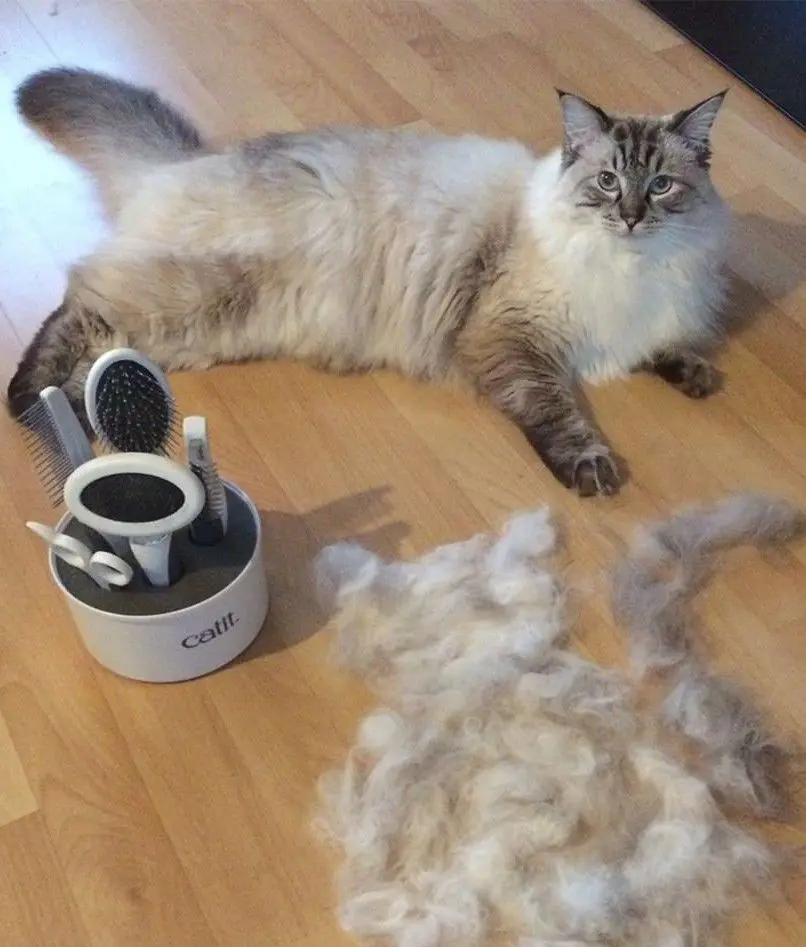
Seasonal shedding is a normal bodily process in cats that occurs in all felines, regardless of their breeds. This seasonal shedding in cats usually takes place twice annually: during spring and autumn.
Immediately after winter, or during the spring months, the cat needs to lose its thicker and heavier winter coat. In a process called molting, the cat sheds its winter hair to prepare for the warmer conditions of summer.
Similarly, in the autumn, the cat sheds again, this time removing its summer coat to make room for thicker layers of hair they’ll need to keep warm when temperatures drop.
The seasonal shedding is periodic and usually occurs around the same period every year. The pre-summer shedding normally falls between March and May, whereas felines shed again between September and November to prepare their winter coats.
Cat Breeds That Shed The Most And Least Fur
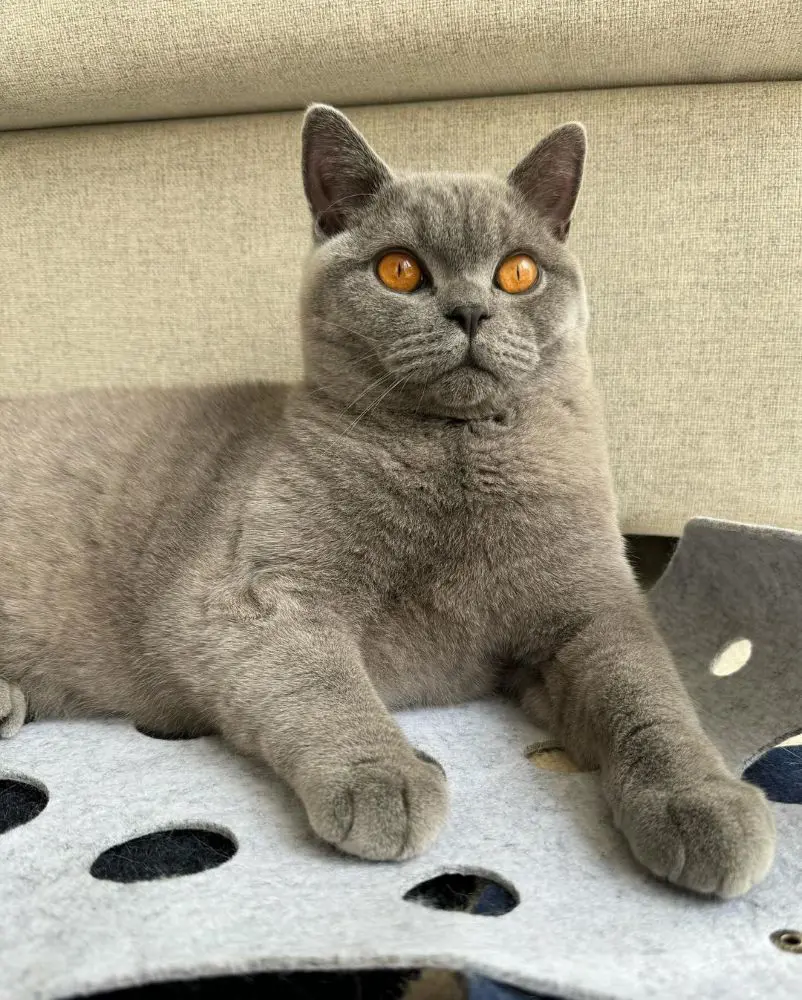
Shedding patterns and volume in cats are often directly linked to their breeds. Different breeds have varying coat types, lengths, and textures, all of which contribute to different shedding levels. While some breeds are known for heavy shedding, others shed minimally or are even considered hypoallergenic.
Usually, long-haired breeds tend to shed more visibly, particularly due to the volume and length of their fur. Their coats require more frequent grooming to manage shedding and prevent tangles or mats.
In contrast, short-haired breeds like the American Shorthair or Russian Blue shed less noticeably, although they still go through the natural hair renewal process. Certain breeds, such as the Sphynx, Devon Rex, and Cornish Rex are even considered hypoallergenic due to their minimal shedding habits; however, no breed is truly hypoallergenic.
Cat Breeds That Shed The Most
The frequent shedders are mostly the long-haired types with double-coated fur. They shed heavily, particularly during seasonal transitions, when they blow their coat to control body temperatures.
Similarly, cat breeds with weather-resistant coats also shed significantly as part of their natural grooming cycle.
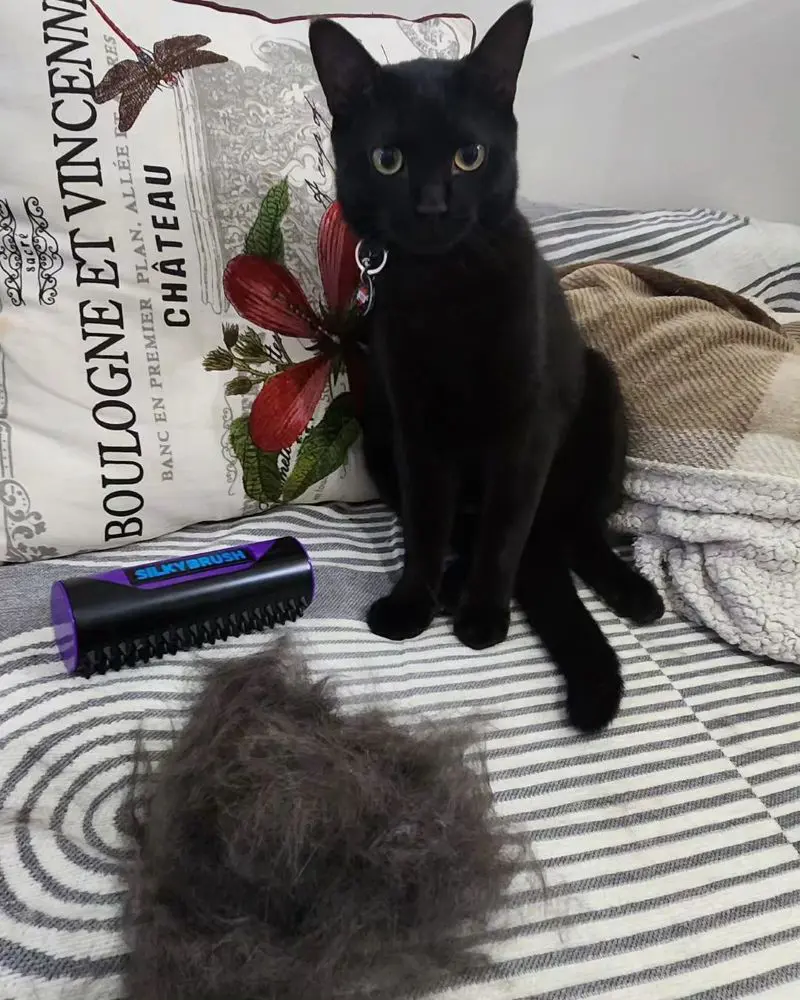
- Persian
- Maine Coon
- Ragdoll
- Siberian
- Norwegian Forest cat.
Cat Breeds That Shed The Least
Low-shedding cat breeds usually include hairless felines, such as the sphynx, or those with only a thin layer of hair. Low-shedders normally lack an undercoat, which is mostly responsible for the shedding.
Some of these breeds may also be called hypoallergenic; however, all cats shed; the only difference is that some breeds shed so little that we rarely even notice.
- Sphynx
- Devon Rex
- Burmese
- Russian Blue
- Bengal cat.
Why Do My Cat Shed So Much?
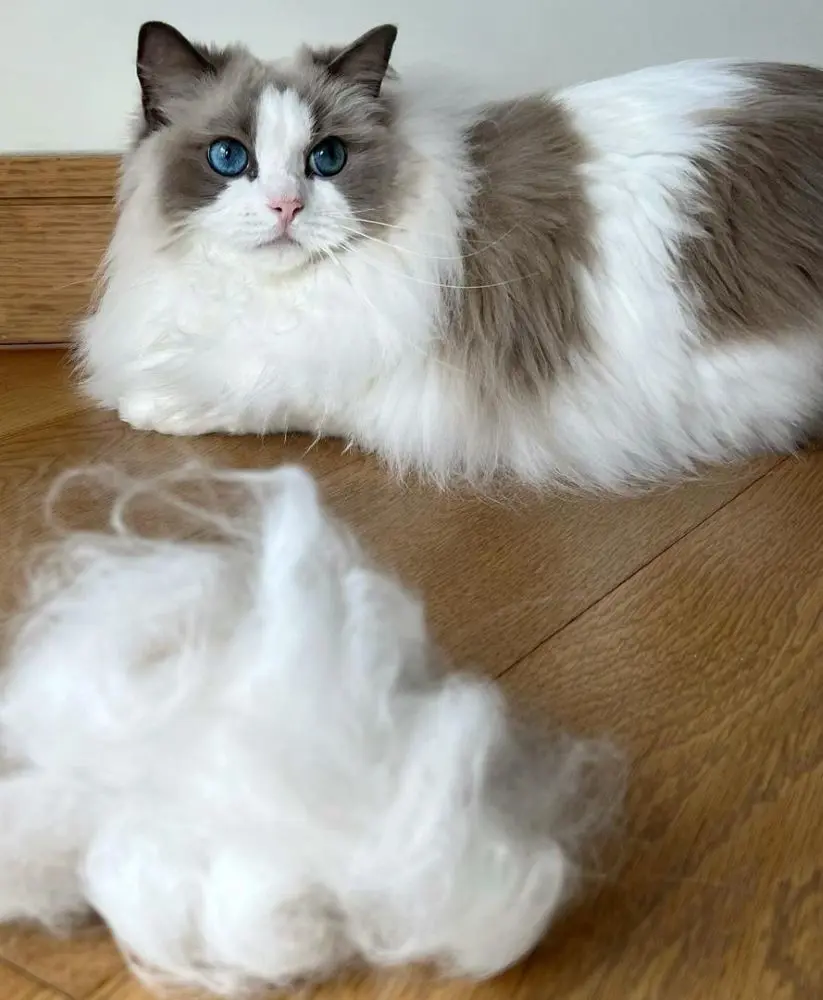
While seasonal and occasional shedding is normal in cats, excessive shedding should warrant the concern of every cat parent. If your cat is shedding too much out of their seasonal shedding, it could be an indicator of an undiagnosed health issue or other conditions that can trigger shedding.
These are some common reasons your cat may be shedding excessively:
1. Poor Diet
Cats need a well-balanced diet to maintain their skin and coat health; when their dietary needs are not met, the hair growth cycle and the skin’s integrity are disrupted.
Cat hair is primarily made of a form of protein called keratin. But, when the cat is unable to meet its protein requirements, the hair shafts can weaken, often making them brittle and prone to shedding.
Additionally, a cat may also experience a shortage of omega-3 and omega-6 fatty acids, both of which are crucial for maintaining well-hydrated skin along with the natural shine of the coat.
2. Stress or Anxiety
Despite being notorious for their devil-may-care attitudes, cats occasionally get anxious or stressed, especially while dealing with a change. In cats, stress can be triggered by something as simple as moving to a new location. While humans usually adapt well to a new home, felines may take a long time to be comfortable in their new environments.
Additionally, stress can also be triggered when the cat is left alone for a prolonged period or if they are forced to remain in a tight space for hours. Stress and anxiety are not directly linked to shedding in cats; however, cats undergoing these emotions often overgroom, causing their hair to fall.
3. Allergies
Cats can be allergic to several insects, environmental elements, and food sources; substances like dairy, grass, dust, and even some cleaning products can be detrimental to a feline's health.
An allergic reaction in cats can be identified by matching the signs with the common symptoms of allergies. For example, uncontrolled sneezing, coughing, running eyes, and vomiting are usual signs that a cat is undergoing an allergy.
Felines with allergies tend to regularly lick or rub their hair, which can trigger additional infections or loss of hair. Identifying the cause and providing thorough treatment to deal with the allergy is crucial to solving the problem of shedding in cats.
4. Parasites
Cats are vulnerable to parasites that hijack different parts of their bodies and lead to unpleasant consequences. Feline parasites are primarily responsible for causing irritation to the skin, often causing an itching sensation and inflammation of the skin.
Over time, this constant irritation disrupts the natural hair growth cycle, triggering shedding beyond normal levels. Parasites that are known to cause hair loss in cats include fleas, mites, ticks, lice, and more.
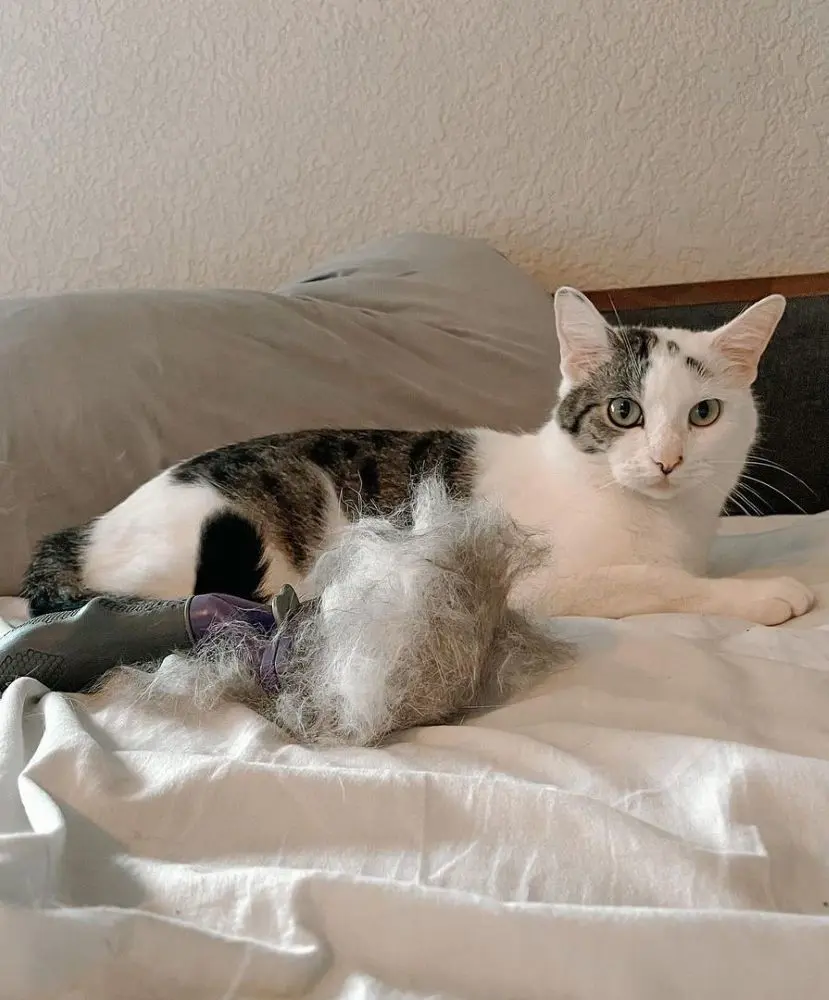
5. Skin Infections
Bacterial or viral skin infections can significantly damage a cat's skin and may also lead to above-average shedding. Conditions like feline acne usually emerge as a minor issue; however, it can eventually infect the hair follicles, causing them to fall untimely.
Besides bacterial or viral infections, yeast infestation can also have similar effects, with the sick cat often developing bald spots all over their body. Each infection should be treated separately, as their treatments and time for recovery can differ.
6. Hormonal Imbalance
Hormonal changes can have unprecedented effects on a cat's body, including but not limited to fur shedding. The effects of this is mostly witnessed during a cat's pregnancy when the feline goes through a rapid process of hormone fluctuations.
Similarly, conditions like hypothyroidism or hyperthyroidism can disrupt the normal hair growth cycle, urging the cat to shed frequently, without need.
7. Excessive Grooming or Poor Grooming Habits
Excessive grooming can weaken the hair follicles and, eventually, cause it to fall off the cat's body. Self-grooming is a natural behavior in felines; it not only helps to keep the cat but also removes any dirt or debris from their hair or skin.
While occasional grooming is good for the cat's health and hygiene, repetitive grooming can weaken its hair and coat. While in their weakened state, if the cat continues to self-groom, the hair will likely shed or get tangled with other hair.
8. Dehydration
When a cat is dehydrated, its skin becomes dry and flaky; the hair follicles get weakened, which increases the likelihood of hair falling out prematurely.
Cat hair is composed of keratin, a protein that requires hydration for strength and flexibility. Meanwhile, dehydration reduces the blood supply to the skin, which in turn decreases the delivery of nutrients and oxygen necessary for healthy hair growth.
Similarly, dehydration causes brittle fur that sheds more easily. Likewise, dry skin often causes itchiness and increased grooming or scratching, maximizing hair shedding.
What To Do If My Cat Sheds Too Much?
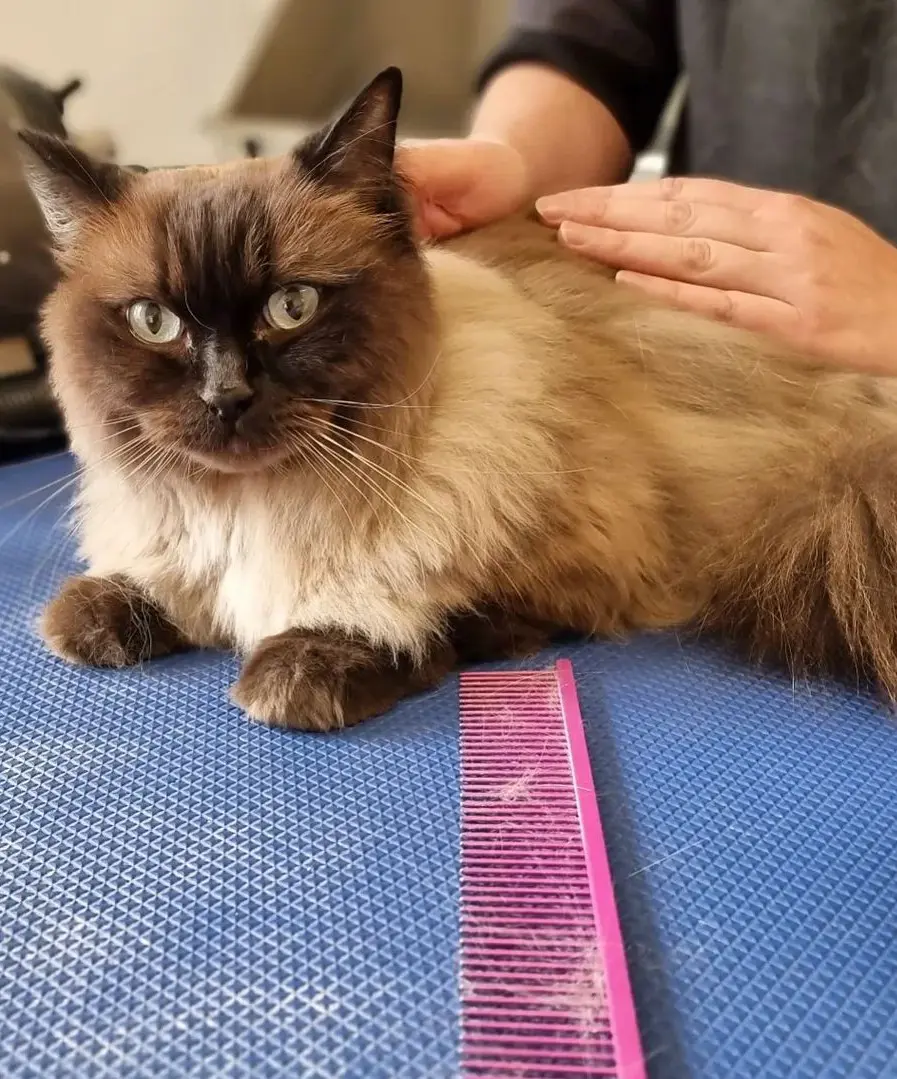
If you suspect your cat of shedding too much all of a sudden, the first step is to determine whether the shedding is due to natural or unnatural causes. Natural shedding implies the regular loss of hair in cats on a day-by-day basis along with seasonal shedding.
As the above-mentioned causes are natural, they will subside when the season passes. On the other hand, shedding can also be triggered by unnatural causes, including stress, illness, allergies, and more. When a cat sheds too much due to these causes, immediate action is required on the owner's part to save the cat from balding while also treating the actual illness responsible for shedding.
1. Improve Diet
As discussed, a lack of lean protein and essential fats can significantly affect a cat's coat health. The cat's hair, composed of keratin, depends on a rich diet, that contains essential nutrients like protein, carbohydrates, fats, vitamins, and more.
If your cat is shedding frequently without appearing to be sick, consider modifying its diet. You will be able to witness the positive changes within a few weeks.
2. Regular Grooming
Grooming a cat two to three times a week can have miraculous results for the benefit of the feline. On the one hand, regular grooming can help reduce shedding around the house as most old hairs get removed during the process itself.
On the contrary, frequent grooming can also help prevent the formation of tangles and mats that can cause healthy hair to fall off.
Grooming a cat is pretty straightforward; use a brush to comb the hair. As you move the brush around the cat's coat, old or dead hair starts getting attached to it. Dispose of the loose hair to prevent it from spreading around the house.
3. Maintain Hydration
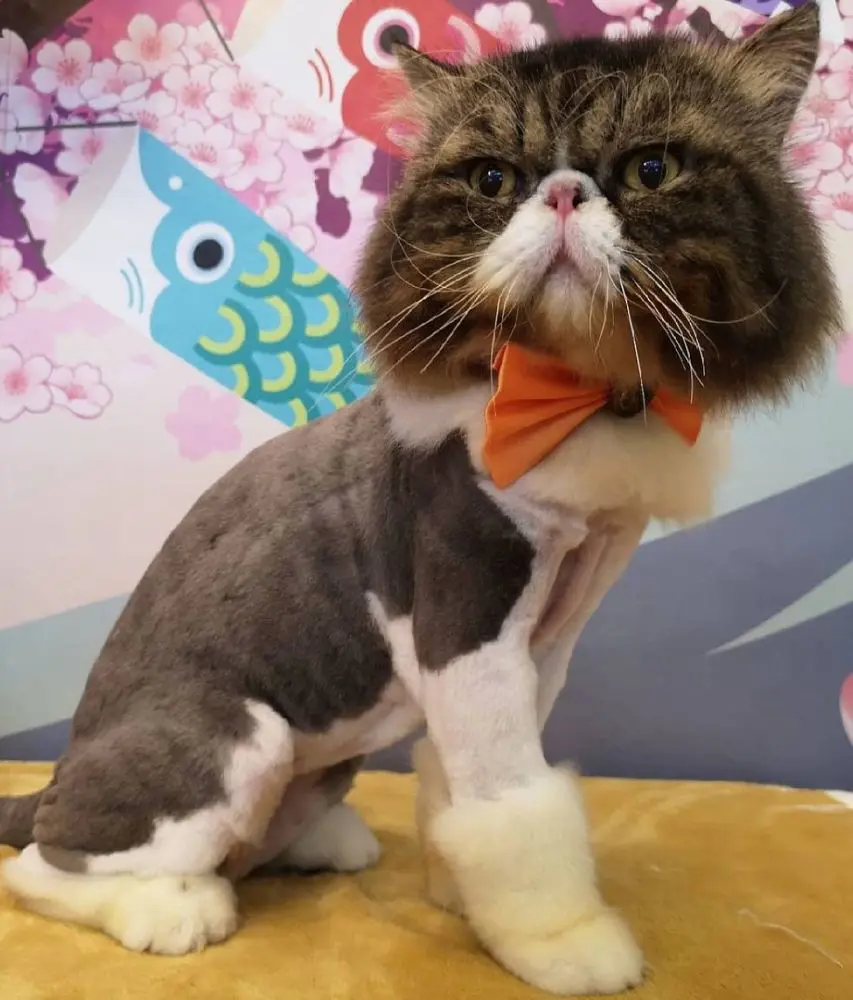
While cats are not usually fond of water, you should encourage them to drink plenty of water, especially during summer when they are at more risk of getting dehydrated.
Cats normally derive water from the meat they eat. Although it serves as a crucial evolution for survival, the process doesn't fully hydrate a cat. Instead, you should consider a fresh bowl of water now and then. To encourage healthy drinking, you can also use positive reinforcements or rewards to maximize water intake.
4. Address Stress
Cats are sensitive creatures that can get stressed out by even the tiniest changes in their surrounding. Felines are fond of the status quo and don't necessarily embrace change with open hearts.
Addressing stress in cats first requires the identification of the source responsible for the stress. Using a calm voice, giving them plenty of interactive toys, or bringing in a second can help provide comfort to your pet cat, thus reducing their stress level.
5. Rule Out Medical Issues
If the above methods don't work, it could be a sign that the shedding is triggered by a feline illness. As allergies and skin infections can both cause the cat to lose its hair, each health issue should be properly analyzed and verified with appropriate symptoms.
In circumstances where the shedding persists for a long time, despite the use of certain measures to control it, and exhibits symptoms like bald patches or redness, it's best to skip home-based treatments and consult a veterinarian.
How Often Do Cats Shed Whiskers?
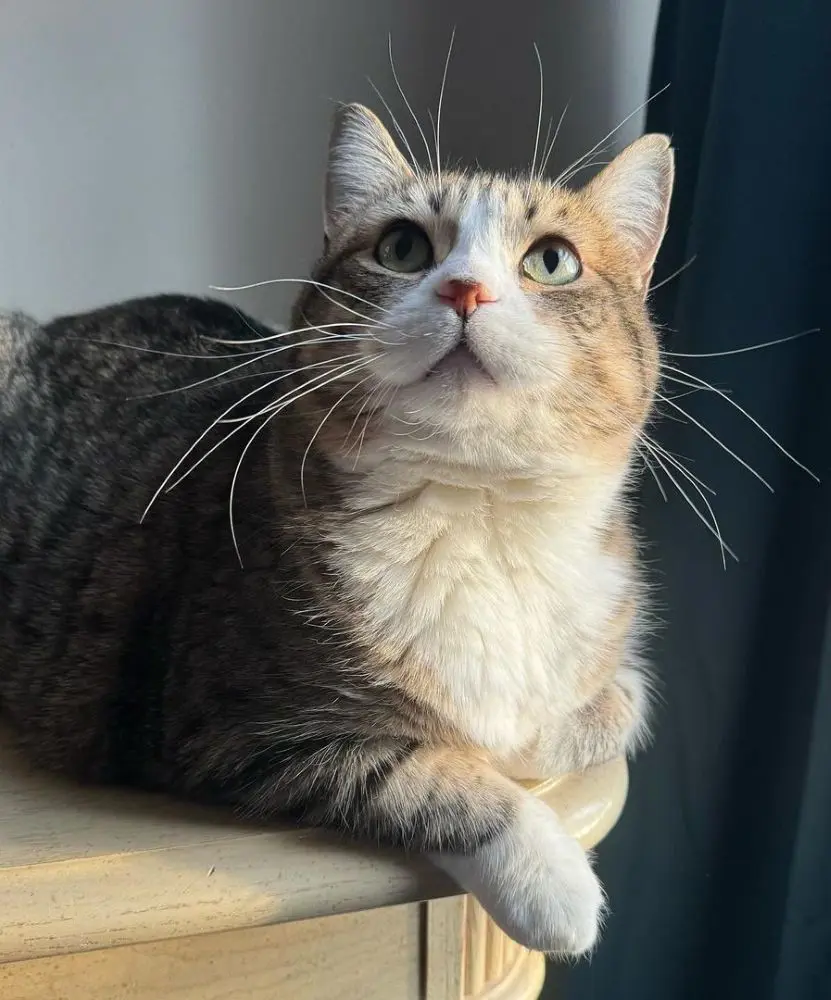
Whiskers are one of the most resilient hair in a cat's body; paired with sensory organs, these hairs are designed to help cats analyze their immediate surroundings.
Unlike hair in other parts of a cat's body, whiskers don't shed as frequently. In fact, shedding too much of whiskers can make movement difficult for a cat as the feline will struggle to understand its nearby environment.
While trimming or cutting a cat's whiskers is strictly prohibited, natural shedding isn't an issue as the fallen whiskers get replaced with new ones. Normally, a cat will shed one or two whiskers per month, which usually get replaced within 11 days. But, if the frequency of shedding is higher, you could be dealing with a potential condition that will require professional care.
Top Lists


